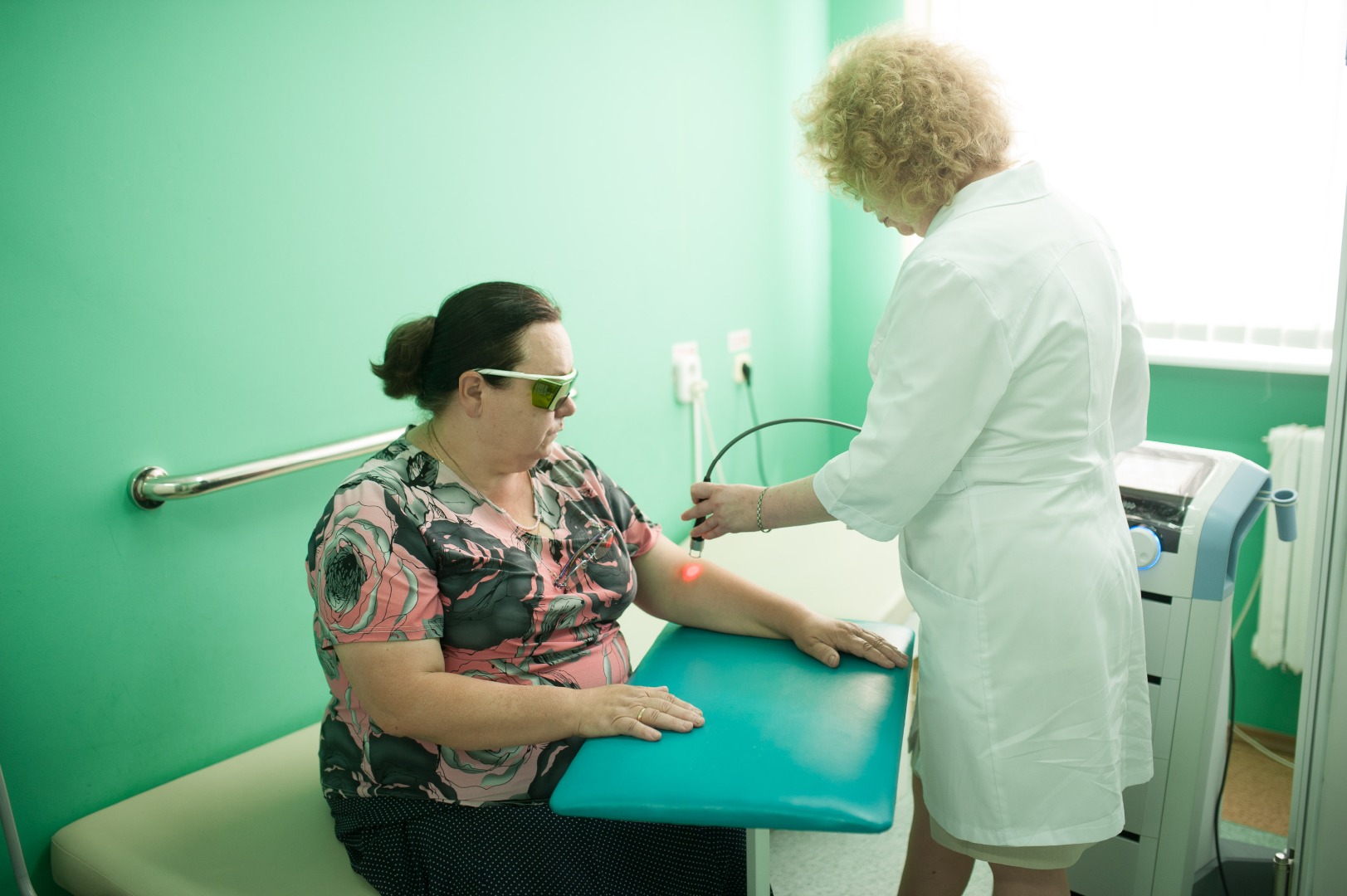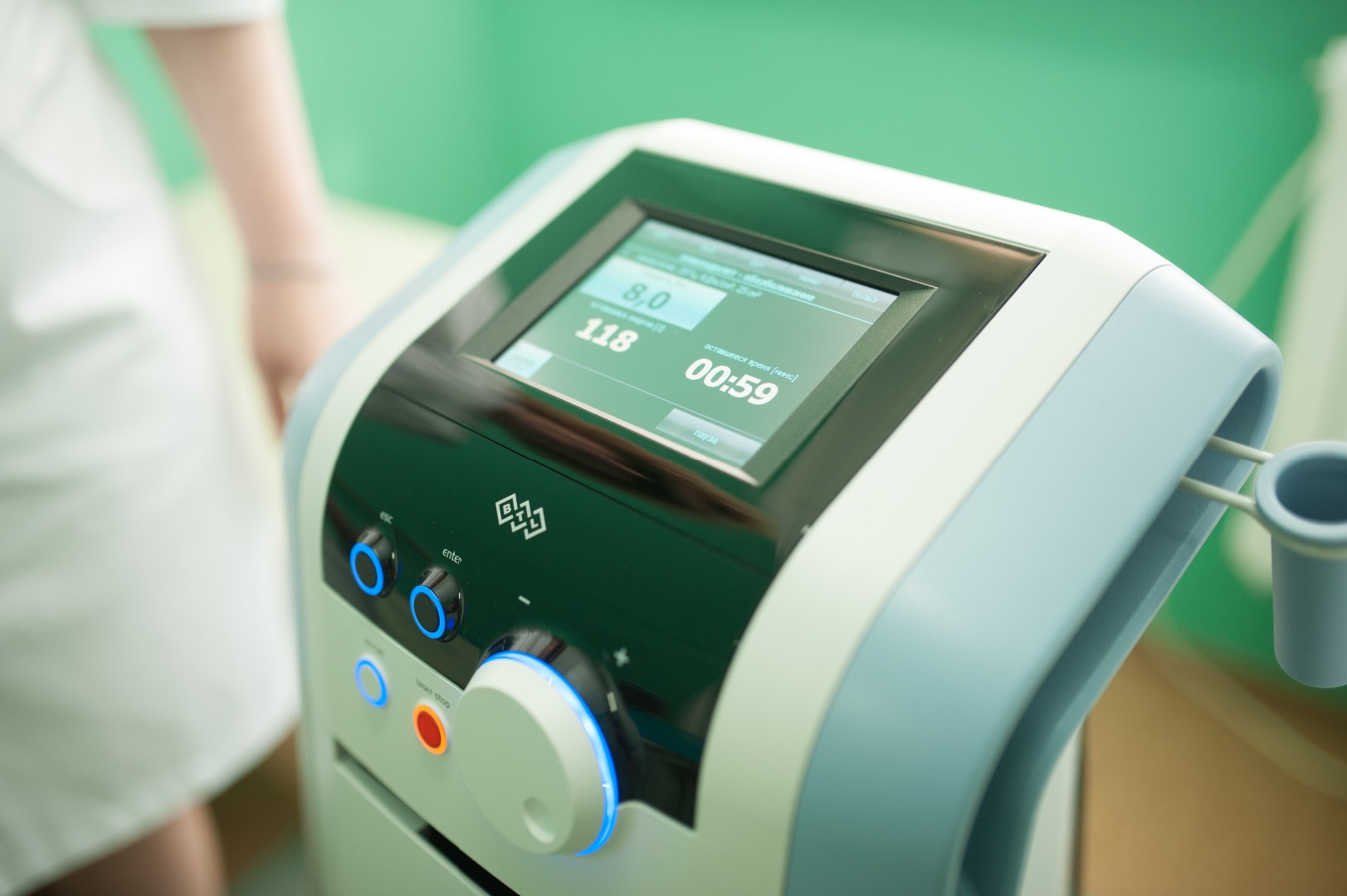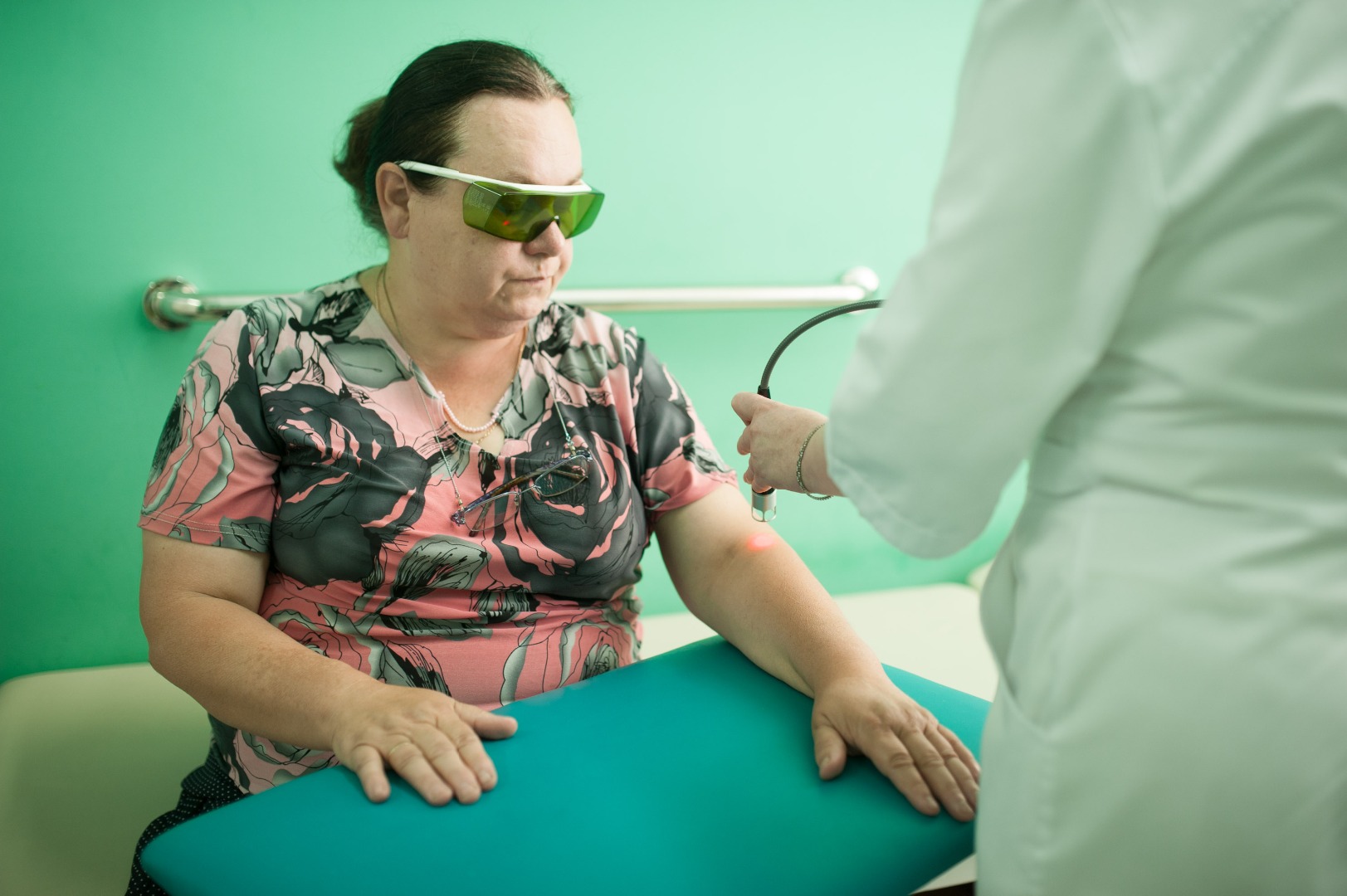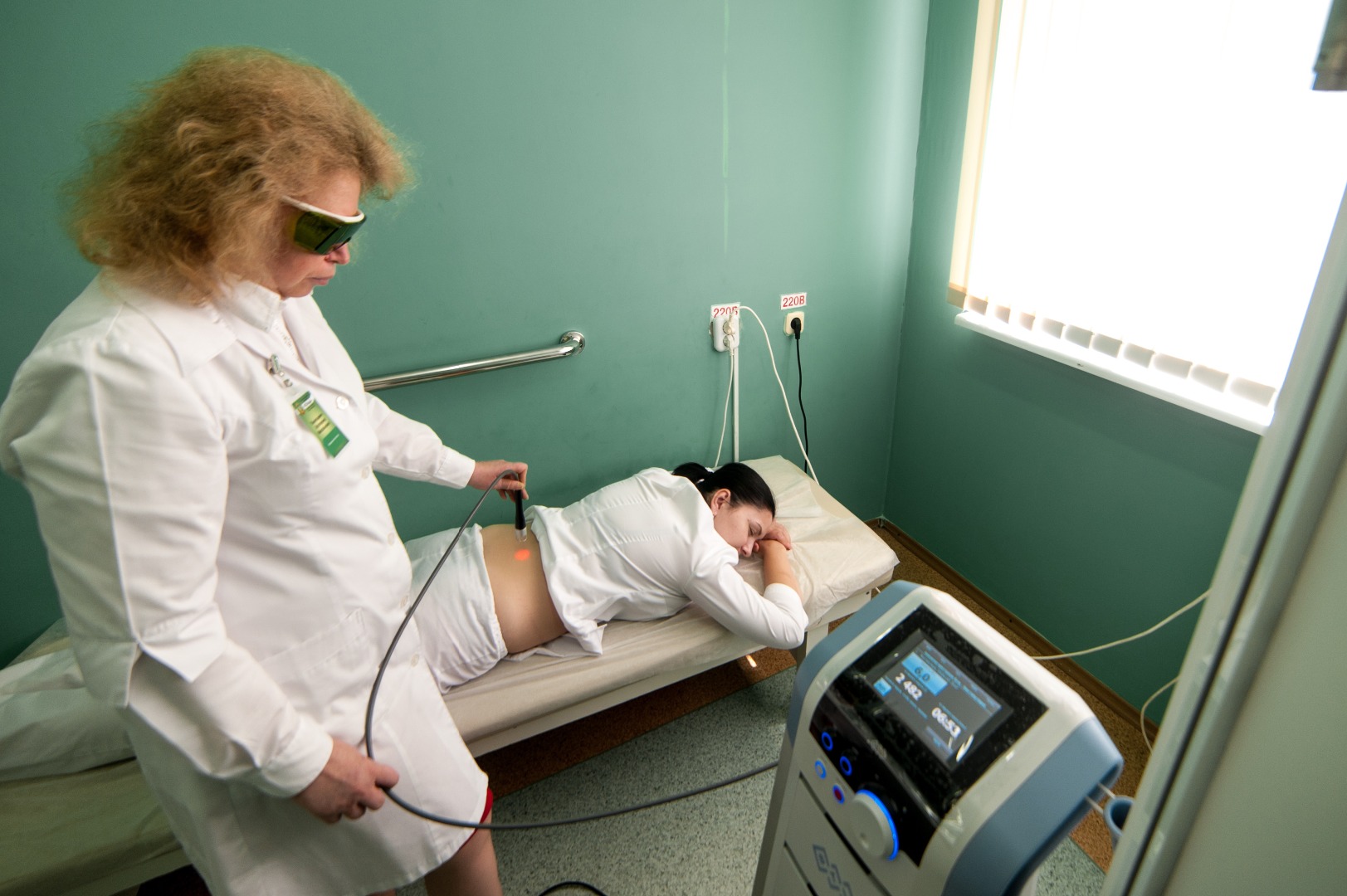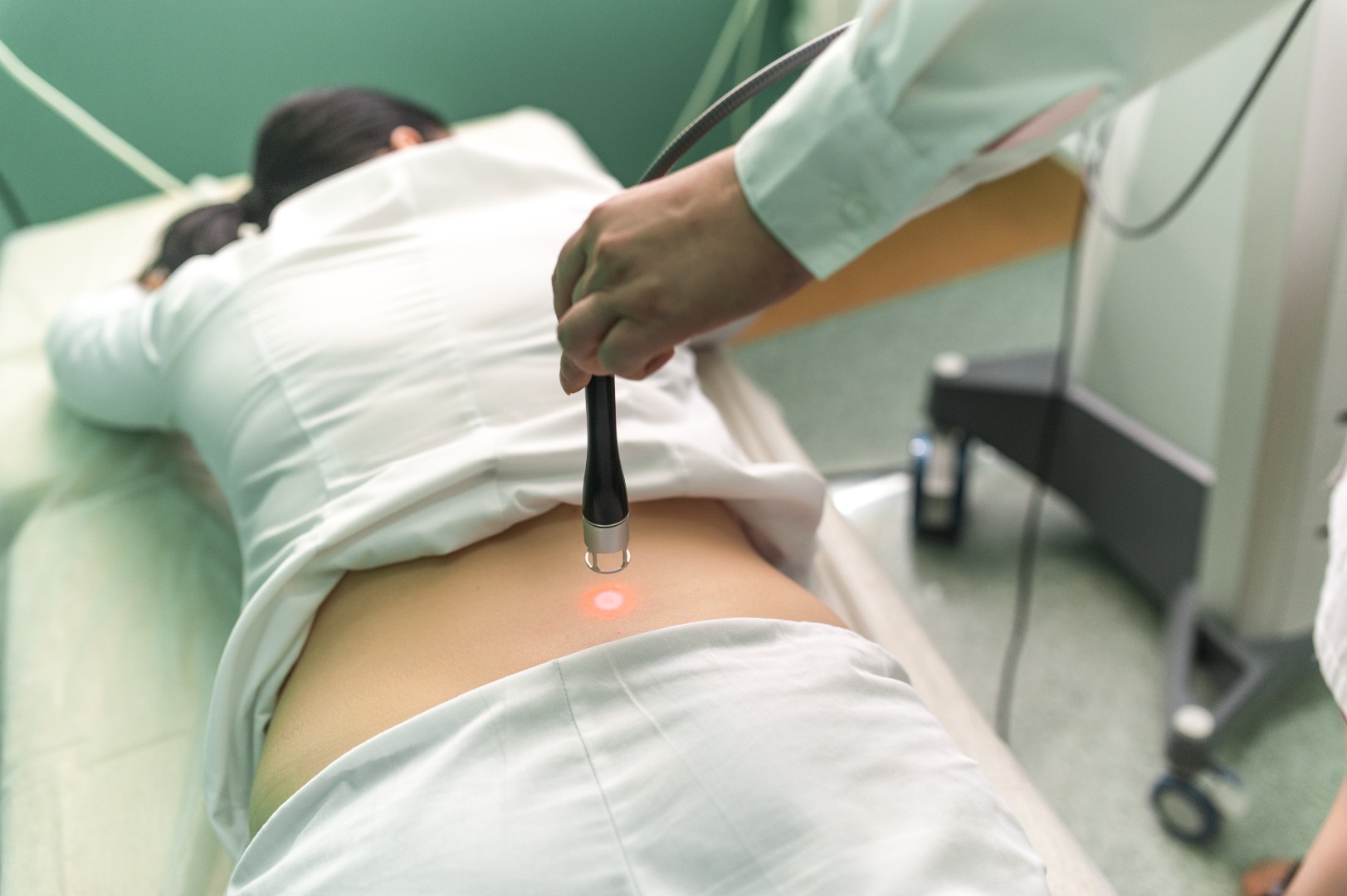HILO-therapy is a technique of laser treatment of musculoskeletal (bone, muscle, joints, tendons), as well as blood and lymphatic system. The high laser intensity allows you to create a bundle of energy with high power — a few thousand watts/cm approach is revolutionary, as other laser medical technology does not give a pronounced analgesic effect.
Effects of HIL-therapy:
- Analgesic - reducing acute pain, persists for a long time.
- Biostimulation is the acceleration of the healing process.
- Thermal effect in biostimulation , the increase in temperature in the tissues improves local microcirculation (without heat damage).
- Anti-inflammatory effect – stimulates the metabolism, quickly eliminate edema.
Features HILO-therapy
- versatility (can affect different tissue structure);
- deep penetration of radiation;
- short pulsed laser signal gives high accuracy exposure without overheating;
- the absence of thermal tissue damage.
Indications for HILO therapy
- Acute disease of musculoskeletal system (pain mode)
- Chronic diseases of the musculoskeletal system (mode biostimulation
- Cervicalgia, dorsalgia, lumbar pain, shoulder pain, epicondylitis (pain in elbow joint) syndrome obturator canal, carpal tunnel syndrome, pain in wrists, pain in hip, knee, ankle, plantar fasciitis with heel spur, ruptures of muscles, muscle spasms, sprains, painful trigger points;
Contraindications for FRAIL-tERPII
- malignant disease benign cancer in the affected area;
- acute viral infection; active tuberculosis;
- pregnancy; hypersensitivity;
- diseases of the blood; circulatory failure above Н2А.
- the use in the eye area – prohibited;
- the presence of cochlear (ear) implant; metallic implant;
- irradiation of the endocrine glands (testes, thyroid gland, adrenal glands);
- febrile condition;
- epilepsy;
- tattoo;- irradiation of freckles;
- disturbance of sensation in the treated area;
- drug sensitivity (for example: taking doxycycline and other drugs according to the instructions for use).
Frequently asked questions.
What are the risks when using the laser high intensity?
The treatment with laser of high intensity is safe. However, there are precautions that must be observed to ensure safe use. High-intensity laser radiation can be dangerous for the eyes (even closed), so the patient and the operator (a medical worker) should wear special protective glasses. Since the laser's high intensity running at high capacity, the operator (a medical worker) should always ask the patient about his sensations during the treatment.
Will the treatment hurt?
One of the main advantages of high-intensity laser therapy is that it is absolutely painless. The operator (a medical worker) performs therapy by moving the applicator along the skin's surface of the scanning or spiral motion or in contact with the surface of the skin, or in a contactless manner, keeping the applicator directly over the treated area.
Can I get burned when using the laserand high intensity?
The possibility of burns when performing high-intensity laser therapy is minimal, because the therapy is dynamic, and the applicator is moved continuously along the surface of the skin. In pulsed mode (phase analgesia), the sensation of thermal effect is minimal or non-existent. In continuous mode (phase biostimulation) a thermal effect is present, but treatment with laser of high intensity provide a safe, use it.
How many sessions will I need?
The number of sessions depends on the symptoms, their severity and the response of the patient to therapy. The number of session can vary from 3 to 15, in very severe cases more. Talk to your doctor about the necessary number of treatments.
How often is therapy?
Usually held from 2 to 5 treatments per week. The operator (a medical worker) assigns the number of sessions so that the treatment was not only effective, but also does not interfere with the schedule of the patient.
Does therapy side effects?
Side effects this treatment has. Perhaps a slight reddening of the impact zone directly after therapy, which lasts for several hours. As with most types of therapy, the patient may feel a temporary deterioration, which also takes place in a short time.
Is there a limit on the number of therapy sessions?
The doctor determines whether the patient needs a greater number of sessions or therapy is ineffective in this case and better to use another method of treatment.
Does the method addictive?
No, unlike pain medications, this treatment is not addictive.

